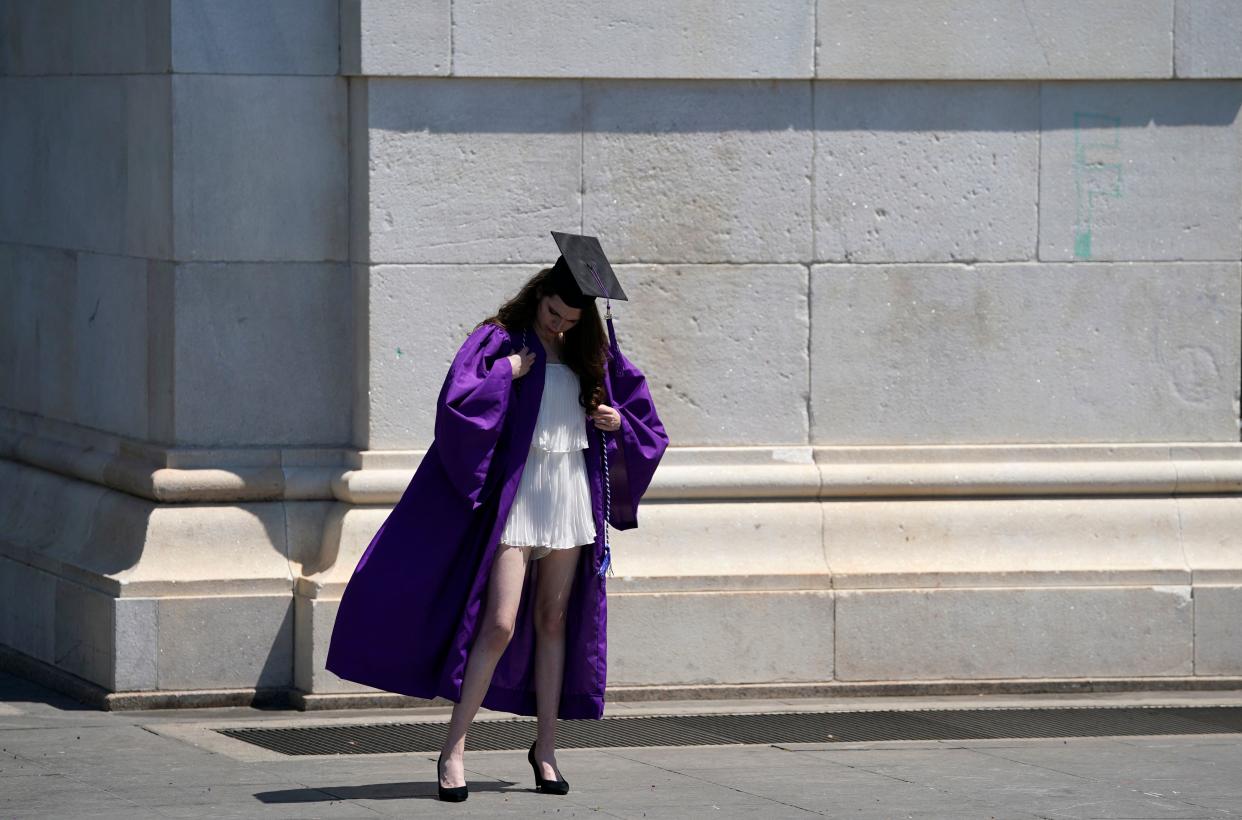Student loan crisis arose from 'giving families a blank check,' author explains
The student loan debt crisis arose after legislative changes over the years that created a system of largely unchecked lending to millions of students, according to a reporter and author of a new book.
"If you just keep on issuing student debt in the same fashion, which is basically giving families a blank check, you're just going to have more and more families end up in unrepayable debt over the years, and it doesn't really solve the underlying issue," Josh Mitchell, Wall Street Journal reporter and author of "The Debt Trap: How Student Loans Became a National Catastrophe," said on Yahoo Finance Live (video above).
Student loans 'became the path of least resistance'
The growth of the student loan program, starting with the Lyndon B. Johnson administration in the mid-1960s, was the result of an increasing desire to see the American population obtain college credentials to become more competitive internationally and promote social mobility.

Consequently, according to Mitchell, the intentions in creating the student loan machinery were noble in that they were devised "to reduce inequality, to help poor people move into the middle class."
Data shows that college degrees generally provide a good return on investment (depending on the college). Furthermore, according to a New York Fed study in July 2020, taking a gap year before attending college "reduces the return to college by a quarter and can cost tens of thousands of dollars in lost lifetime earnings."

Given the benefits, Mitchell said, "Congress was very reluctant to cut off anyone's access to college. And it just became the path of least resistance to give people loans."
At the same time, he added, "it became very easy to ignore the fact that a lot of people were defaulting on their loans and a lot of people lied to themselves about the fact that people would repay this debt."
Congress "just applied rose-colored glasses to this program throughout the years and said: 'Look, we need to give our constituents access to student loans,'" Mitchell said, and individual lawmakers were resistant to reducing "access to this golden ticket to the middle class."
Fast forward to 2021: With roughly 44 million student loan borrowers owing $1.7 trillion in debt, prominent Democrats have repeatedly urged President Joe Biden to use executive authority to enact broad student loan forgiveness.
Mitchell noted that the cancellation of interest on federally-backed student loans is one route to fix the problem given how much bad debt was on the U.S. government's books. Based on Mitchell's reporting, the federal government is expected to lose more than $400 billion from the student loan program.
"If you look at how much debt is what I would call toxic debt, meaning it's never going to get repaid, anywhere from a 1/3 or more of the debt is not going to get repaid, according to a report that took place under the Trump administration," Mitchell explained. "That's approaching the amount of toxic debt that was on private lenders' books during the housing crash: Private lenders lost $535 billion on subprime-mortgages during the 2008 financial crisis."
—
Aarthi is a reporter for Yahoo Finance. She can be reached at aarthi@yahoofinance.com. Follow her on Twitter @aarthiswami.
Follow Yahoo Finance on Twitter, Facebook, Instagram, Flipboard, LinkedIn, YouTube, and reddit
